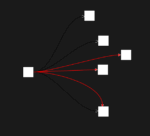In today’s fast-paced business environment, enhancing client experiences while maintaining operational efficiency is a challenge every organization faces. As experts in data, analytics, and innovation at Dev3lop, we embraced this challenge head-on by developing an AI-powered assistant for client intake. Driven by the goal of streamlining our onboarding processes, improving client satisfaction, and freeing up vital human resources, our journey into AI technology was insightful, rewarding, and full of valuable lessons. Here we’ll share our experience and discoveries to help decision-makers navigate similar projects with confidence and clarity.
Understanding the Importance of Clearly Defined AI Objectives
Before starting the development of our AI intake assistant, one key lesson we learned was the importance of clarity in objectives. AI solutions, especially those involving client interactions, aren’t successful without well-defined goals from the outset. Clearly documenting the problems you’re attempting to solve and the tangible benefits expected empowers your teams to remain focused, measure the project’s success accurately, and pivot quickly if necessary.
In our case at Dev3lop, our primary aim was to optimize client onboarding – a critical yet resource-intensive aspect of delivering our data engineering consulting services. We understood initially that every onboarding required collecting detailed information, defining client objectives, and scheduling workflow tasks. By setting clear, measurable targets such as reducing intake time from hours to minutes and freeing up consultants’ schedules for more strategic tasks, we created actionable benchmarks to gauge success.
Throughout our experience, we realized establishing benchmarks not only informed our technical solution but also allowed agile adjustments to improve the AI-driven system continually. Transparency in goals significantly streamlined collaboration between our development team and business stakeholders, enabling rapid iterative processes and delivering noticeable time and resource savings early into deployment.
Designing a User-Friendly Interface is Critical
A significant takeaway from building our AI assistant involved mastering user experience (UX) considerations. Functionality alone doesn’t guarantee adoption for any tool—and with AI tools, intuitive design becomes an even more uncompromising pillar of success. Clients today expect convenience, clarity, and interactivity from intake procedures – no matter how sophisticated the underlying technology is.
Our UX/UI experts collaborated closely with our data engineers to design a dialogue-driven interaction flow that felt natural, conversational, and client-friendly. Early trials uncovered that clients preferred interacting with a chatbot that replicates a conversational style rather than filling out static, traditional intake forms. This led us to lean heavily into natural language processing capabilities and conversational interfaces, enabling clients to provide critical background information naturally, quickly, and comfortably.
Through focus groups and frequent testing intervals, we adjusted various design aspects, like response time, question formatting, and the clarity of UI prompts, ensuring optimal user engagement. What we uncovered reinforced a core lesson—simplicity is powerful. Ensuring that technology stays out of clients’ way by providing seamless dialog and interactive decision-making can make or break their onboarding experience. Great UX boosted adoption rates, positively influencing our bottom line from the moment we launched.
AI Transparency and Trust Are Paramount
The nature of our business means handling sensitive, high-impact client data regularly. Introducing an AI solution into this equation taught us the profound importance of transparency and trust. Decision-makers and clients want clarity about how AI assistants use and store their data, as well as assurances regarding privacy protections. Any uncertainty in these aspects creates resistance that undermines the solution’s intended purpose.
Recognizing this, we made transparency about how the AI assistant would utilize client data a key communication strategy upfront. Clearly communicating the data privacy measures, including industry-standard encryption methods and strict data access protocols built into our system, instilled confidence among our clients. By providing explanations on how client data supports AI decision-making—while reassuring that client-specific insights remain exclusively confidential—we fostered trust regarding technological adoption.
Additionally, we enabled visibility into the AI assistant’s processes by creating concise documentation and educational support resources that clarified decision-making algorithms without overwhelming users with technical detail. This transparency empowered both our internal team and external users to trust the AI assistant, increasing adoption velocity and satisfaction. Learning to prioritize AI trust-building now helps inform all future data-driven ventures and AI deployments across our consulting practice.
Plan for Continual Improvement and Data Refinement
Building an effective AI-powered intake solution is not a one-time effort but rather an ongoing, iterative journey. AI tools inherently rely on gathered data and evolving client interactions to continually improve their accuracy and efficacy. Thus, creating infrastructure dedicated to capturing, validating, and refining data has been crucial to our ongoing project success at Dev3lop.
As we progressed, we quickly realized the significance of consistent data engineering efforts, including diligently capturing user feedback, interaction data, and performance metrics. These data pipelines enabled us to base optimization and refinements on real-world insights rather than assumptions. Moreover, a data governance strategy became influential in ensuring data integrity, facilitating quality assessments, and compliance evaluating aspects performed crucial roles to foster continuous system evolution.
Frequent assessment cycles have become deeply embedded in our AI implementation journey. Our multidisciplinary team regularly reviews system performance, identifies improvement opportunities, and executes data-driven enhancements. Planning systematically for continual improvement transformed early challenges into growth opportunities, solidifying our AI solution’s competencies month after month. Every iterative enhancement contributed to improved performance outcomes, deeper insights visibility, and increased client and stakeholder satisfaction.
The Necessity of Cross-Disciplinary Collaboration
From our experience, delivering an AI assistant for client intake reinforced the absolute necessity of cross-disciplinary collaboration. Building effective AI-driven tools requires far more than just technical prowess; it necessitates continuous collaboration among data engineers, business analysts, UX designers, and stakeholders across the organization.
At Dev3lop, we commit to embedded, collaborative teams that bridge multidisciplinary expertise. While data engineers handled underlying algorithms and integration requirements, UX/UI specialists translated interactions into engaging client experiences. Simultaneously, analysts and stakeholders contributed deep domain insight. Their feedback throughout each iterative stage helped ensure that the AI solution continuously aligned with unique business goals and real client needs, fostering lasting organizational value and tangible business impact.
Realizing the power of these integrated teams has shifted our future project model. Our experience underscores that successful AI implementation isn’t siloed but intertwined across disciplines. Cross-team initiatives and regular project reviews now drive accelerated innovation and improved onsite efficiency, significantly elevating our client interactions. To decision-makers planning their AI project journeys, we emphasize the strategic advantage yielded through cultivating multidimensional expertise, providing excellence at every step.
Conclusion: Embracing AI Potential in Client Intake
Our journey of developing an AI assistant for client intake underscored powerful lessons in clearly defining objectives, crafting quality UX, building transparency and trust, refining data continuously, and nurturing collaboration across teams. By embracing these insights, businesses can revolutionize onboarding processes, transforming traditionally tedious intake into efficient, energized client relationship-building systems. Leveraging AI strategically not only enhances business productivity but positions organizations at the forefront of industry-leading client engagement innovation.
As AI continues impacting industries across the globe, organizations aiming to maximize data science and analytics should consider partnering with experts in data engineering and consulting. Decision-makers prepared to embrace AI’s valuable advantages stand poised to reap substantial gains today and future-proof their businesses tomorrow.

























